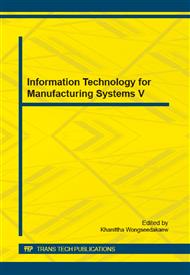p.311
p.316
p.321
p.327
p.333
p.340
p.343
p.348
p.354
The Application of Fuzzy Equivalence Relation Based on the Quotient Space in Cluster Analysis
Abstract:
A fuzzy clustering analysis model based on the quotient space is proposed. Firstly, the conversion from coarse to fine granularity and the hierarchical structure are used to reduce the multidimensional samples. Secondly, the fuzzy compatibility relation matrix of the model is converted into fuzzy equivalence relation matrix. Finally, the diagram of clustering genealogy is generated according to the fuzzy equivalence relation matrix, which enables the dynamic selection of different thresholds to effectively solve the problem of cluster analysis of the samples with multi-dimensional attributes.
Info:
Periodical:
Pages:
333-339
Citation:
Online since:
October 2014
Authors:
Price:
Сopyright:
© 2014 Trans Tech Publications Ltd. All Rights Reserved
Share:
Citation:


